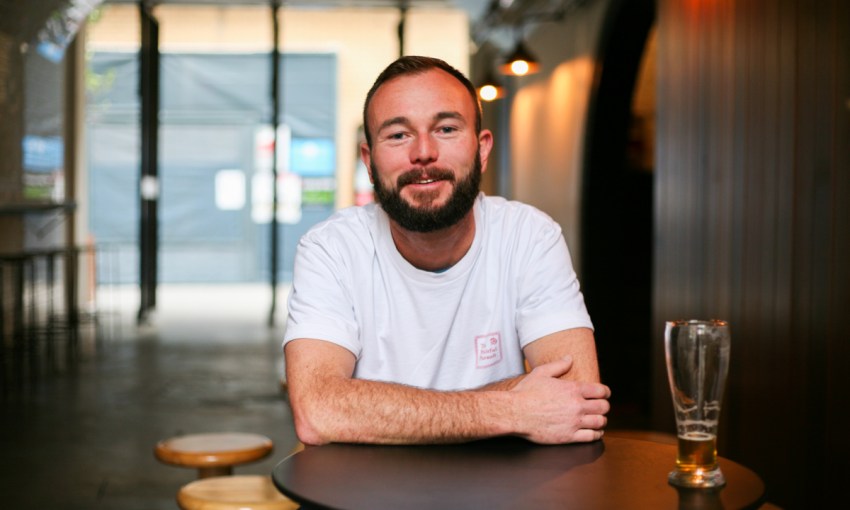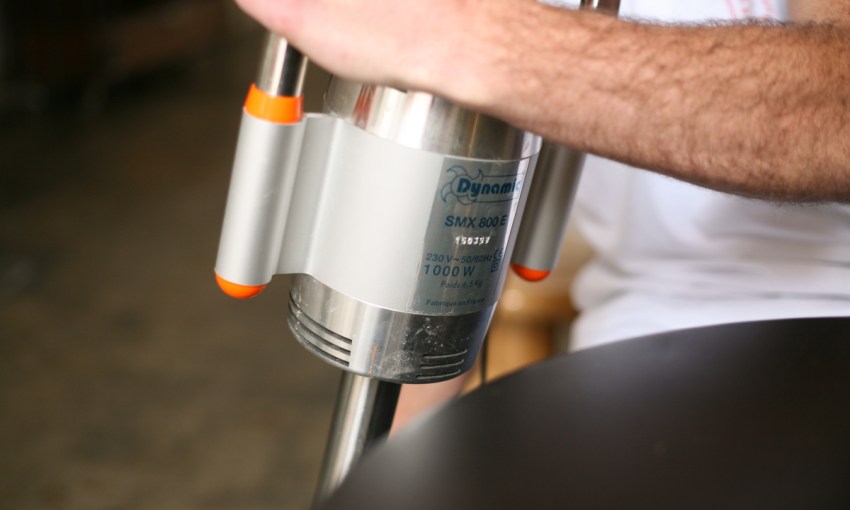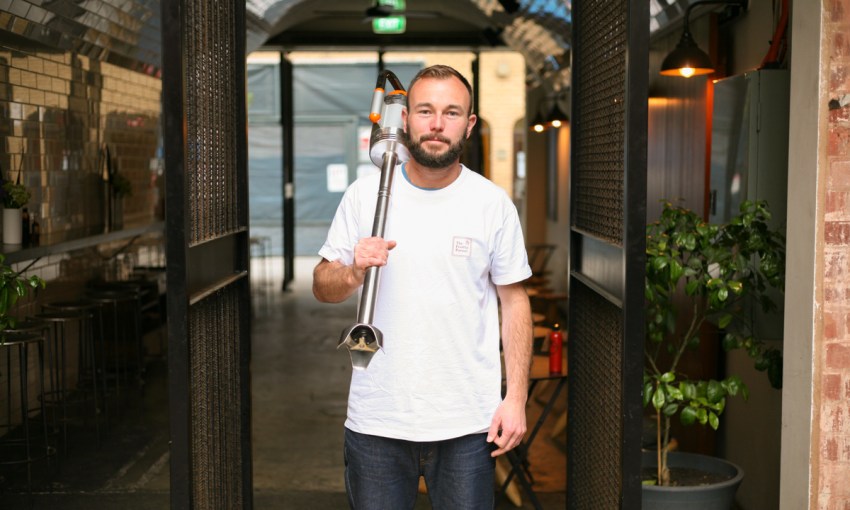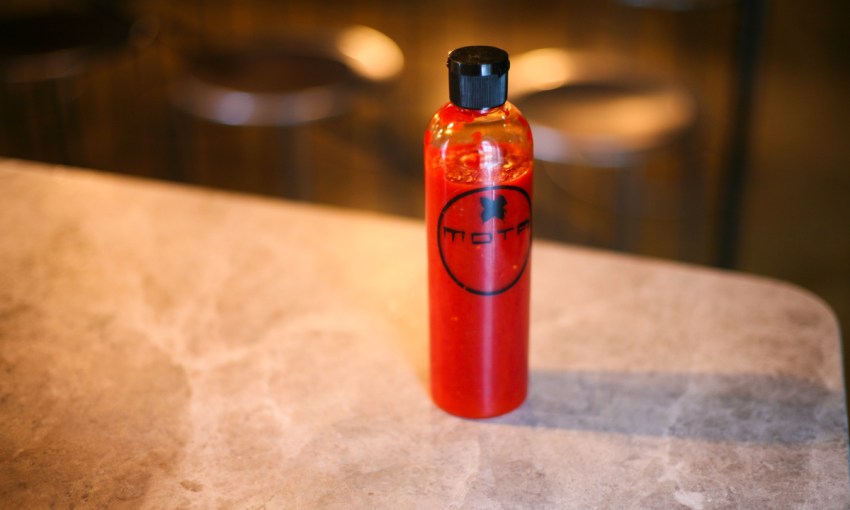Locally-grown, locally-made and ready to put on almost everything you eat.
Made in SA: Mota Sauce
The proliferation of Adelaide’s fiercely local food and drink culture has some unintended yet delightful consequences, and one of those is that Steve Dearden’s hobby making chilli sauce has become a rapidly-growing business.
Mota Sauce also owes its existence to Mischief Brew’s Scott Giles – who opened his commercial space up to Steve to make the sauce after the first delivery of chillies arrived with little warning.
Steve is pictured here with his giant stick blender – one of the Mota family’s most-valued members.
A hospitality veteran, Steve was given his first recipe for sauce by a regular customer about seven years ago, but it wasn’t until much later that he actually followed the instructions, produced his first batch and then promptly began tweaking the method and ingredients.
A short couple of years later and his Mota Sauce is on every table at Peel Street’s Bread and Bone, featured on the menu of The Grace in Norwood and on offer at Sukhumvit Soi 38.
But even when he was first tinkering with the sauce, Steve didn’t intend things to go beyond his kitchen.
“I was just giving it to friends and they said, ‘you should be selling this’, and then I woke up one morning and thought ‘alright, let’s do it’,” he says.
“In 2014, I grew 65 chilli plants in a friends backyard which equated to 9 litres of sauce, which is a good image of how much chilli you need to make this kind of sauce.
“And then in 2015 I had 5,000 plants.”
Those 5,000 chilli plants belong to a family of growers based just outside of the Riverland who have begun supplying Steve, and they – along with branding developed by SA artist John Engelhardt – represent the tipping point where hobby became a serious and time-consuming concern.
“With this grower it was 300kg of chillies coming in each week,” says Steve. “All of a sudden we’re spending $1000/week on chilli.”
But Steve’s networks in the hospitality industry were keen to support an Australian-made sauce, and while production might have stepped up quickly, so has interest.
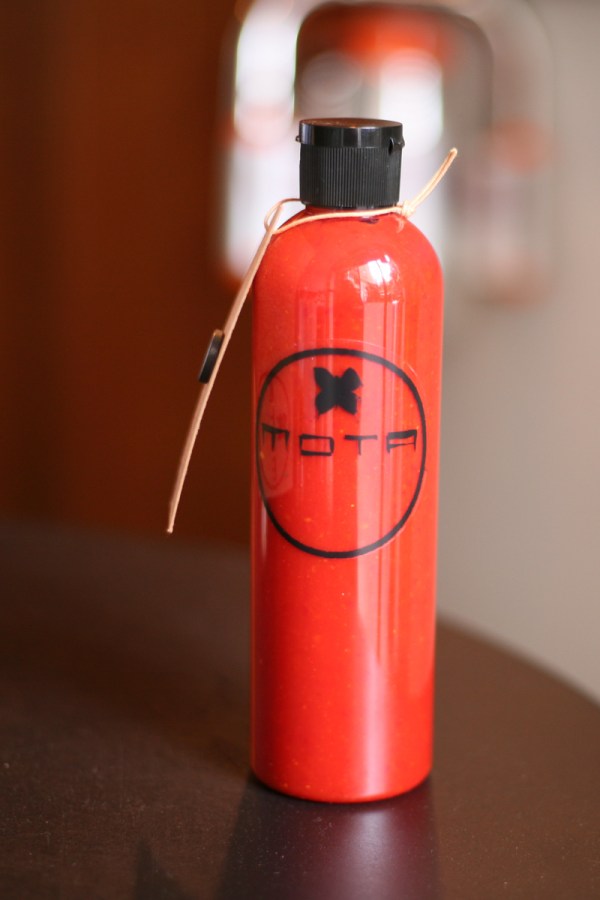
Although the eateries who have taken on the sauce are no doubt keen on using locally-made and locally-grown produce wherever possible, the flavour profile of Mota has also been integral to its success.
After years serving food and wine to customers, Steve has an acute understanding of what flavours people are looking for. A lot of raw chilli goes into the sauce, but that doesn’t result in a mouthful of burn.
“There’s other people around making super hot sauces out of habaneros and ghost peppers – sauces that really burn,” says Steve.
“My tolerance for chilli isn’t that high, weirdly enough, but I also notice if chilli is not in a dish so it’s about bringing that balance and having lots of acidity, which is really nice in chilli sauce, and a bit of garlic and salt too. It’s not meant for people who are all about hot sauce, it’s just meant to be an extra condiment.”
Given the initial popularity, it seems like Steve’s approach to Mota will keep it growing in the coming chilli seasons – but he’s still keen to make a few changes as things expand.
Influenced by the natural winemaking movement he engages with through his hospitality work daily, he hopes to make Mota as environmentally sustainable as possible.
“In the long term I’d like to be doing organically grown chilli and biodegradable packaging, that is really essential,” Steve says. “I really want to get it certified because it’s important to a lot of people and also it’s important to me that we be conscious of what we put into the soil.”
A spice rub made from the chilli skins and seeds that are left over from the sauce-making process is also in the works – which would mean less food wastage and also an expansion of Mota’s range.




